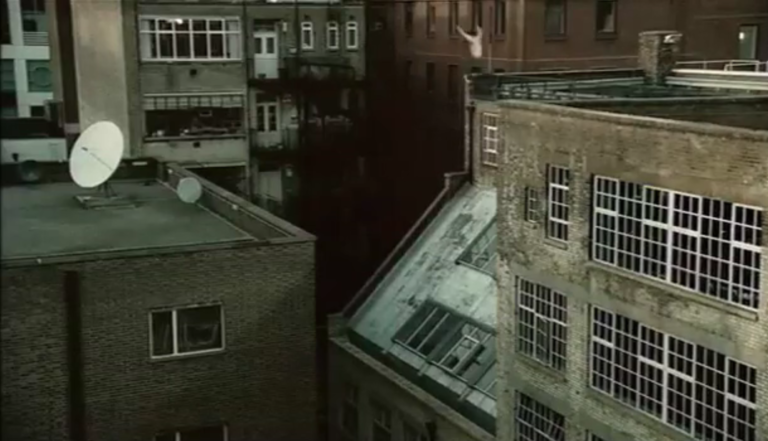“Parkour is here and it will stay here forever! Because it was born from a pure heart and nourished from all the love that a son can give to his father!” –David Belle
________________
David Belle is the undisputed founder of Parkour, a discipline that revolutionized physical movement. Parkour’s roots can be traced back to a profound source, David’s father, Raymond Belle. Before we delve into the legacy of Parkour, it’s important to acknowledge the historical context and the distinct characteristics that set it apart from other physical disciplines.
Preceding Parkour, there existed various movement concepts and training methods, such as Georges Herbert’s Natural Method of Physical Training, which was comprised of ten groups of exercises. The shoulder roll existed as did martial arts including one dedicated to height drops. “The Mark Of Zorro,” a silent film made in 1920 showcased impressive Parkour-like movements including a well executed speed vault, and of course Jackie Chan became renowned in the 80’s and 90’s for his film acrobatics. However, Parkour diverged fundamentally from these methods, arts, one-off movements, and movie stunts. It was a new and groundbreaking approach created by David Belle, inspired by his father Raymond Belle.
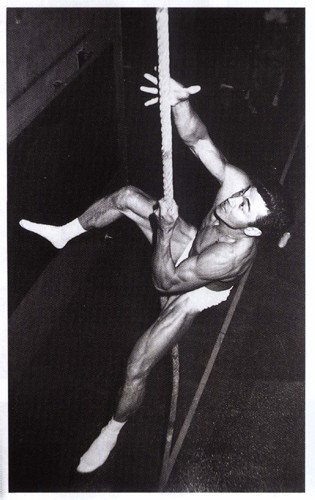
Raymond Belle, who was one of the greatest, if not THE greatest, physical athlete of the 20th century, wasn’t a product of genetic luck or conventional sports. His incredible physical abilities were honed through rigorous training in the forests of Vietnam. Here, as a child, he faced daily life-threatening challenges where he climbed trees above enemy soldiers, and he searched out any way to get stronger such as strengthening his forearms by repeatedly striking them against trees, a training method that conjures up images of Shaolin Monks except for that it was done out of a desire to survive. Raymond possessed an unwavering and almost compulsive desire for strength and fearlessness, instilled by the trauma of his childhood.
David Belle’s journey to create Parkour began due to Raymond’s profound influence, and David’s love for him. David asked his father a simple question, “Daddy, how did you get so strong?” Raymond answered in one word: “Parcours.”
David internalized this and began creating his own “parcours” through the obstacles in his hometown, Lisses, its surrounding forests, and the neighboring city of Evry. David’s relentless training regimen, characterized by countless hours outdoors, cultivated his physical prowess, an adeptness of movement, and a style and vision that even Raymond himself had not possessed.
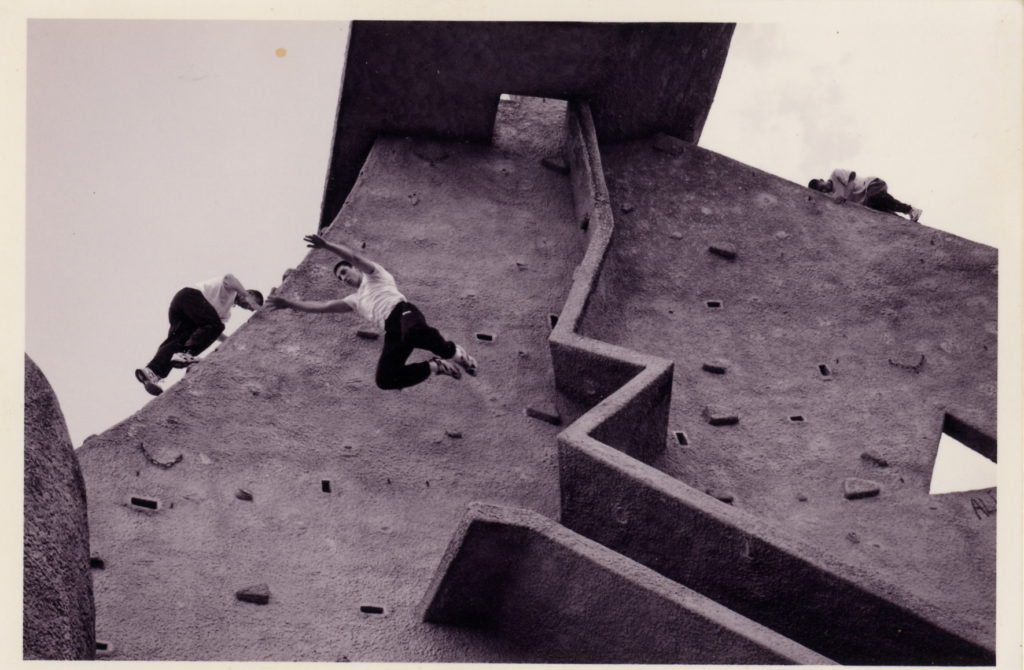
David used to navigate the cities of Lisses and Evry in one training session as if it was one giant parcours. He said it took him 8 hours. Propelled by this spark, he often looked around and wondered why more people weren’t doing what he was doing – training his body and his mind by overcoming physical obstacles. No gyms or equipment needed. This was something new.
If there be any doubt about Parkour’s uniqueness, then examine Parkour’s defining move – the roof jump, which unequivocally sets it apart from every other discipline.
During the filming of the award winning BBC commercial, “Rush Hour,” directed by Tom Carty (2002), David’s performance captivated the audience but only after it awed the stunt director who asked David jokingly, “How many Mercedes are you going to buy after this commercial? Two? Three?” But David was only paid $5,000 for the shoot, even less than the stunt director who stood around idly while David ran around like a madman for 3 days. This experience left David disillusioned about commercialization and people in general. However, the most awe inspiring jump in the commercial marked a turning point in Parkour’s history. David believed it launched the discipline, and not because he did successfully, but because he did it twice.
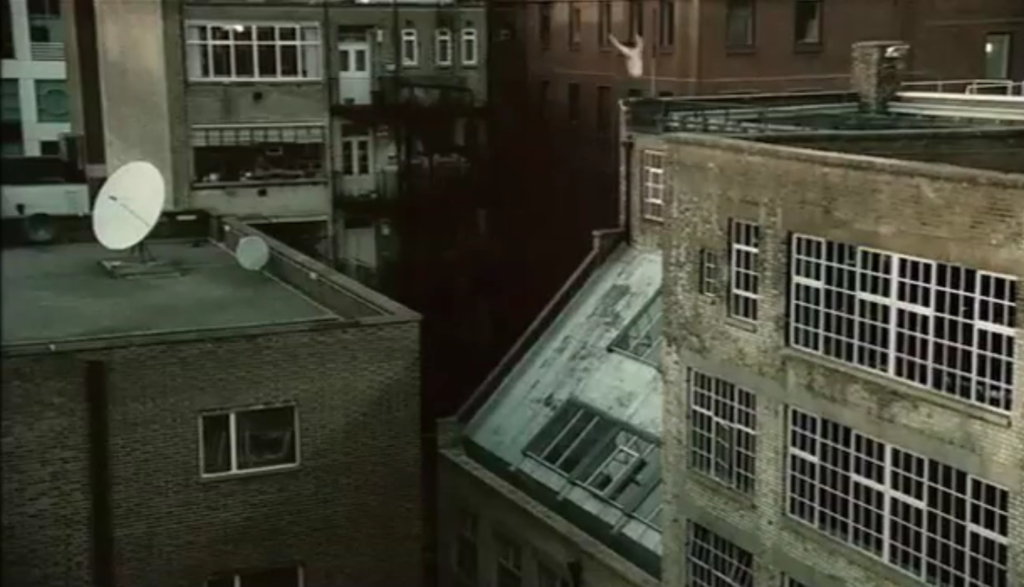
Just as Bruce Lee created Jeet Kune Do, a revolutionary martial art that combined well known fighting techniques from from other disciplines with new techniques he created into a a wholly new approach and philosophy, David Belle too studied studied various movement disciplines, incorporated ideas passed to him by his father, and created his own techniques. Ultimately David developed Parkour, a substantially new and unique method focused on movement in all environments while being revolutionarily centered around city obstacles.
David once said Parkour was like a martial art philosophically, but instead of combatting against someone else, “[in Parkour| it’s just between you and the obstacle.”
“We find obstacles everywhere, and by taking them we nourish ourselves.” David said this in the famous TF1 news spot. But not only did he nourish himself, he proved himself, and he proved his discipline to be worthy of recognition through his movement mastery and his seemingly inhuman physical abilities.
Most people don’t even know the half. David’s biggest jumps were not filmed.
David used to navigate the cities of Lisses and Evry in one training session as if it was one giant parcours. …it took him 8 hours.
Per my time spent working side-by-side with David, and my endless hours spent with him listening to his stories, during most of which I barely said a word except to ask questions, it was clear to me that David is content with people embracing Parkour’s training techniques and using the word “Parkour” to describe their movement. However, understand that using the term “Parkour” or even perfecting the discipline’s unique movements does not necessarily equate to understanding the discipline. The simplicity of Parkour has made it easy for enthusiasts to mimic David, and David’s limited publications, absence of releasing a formal training curriculum, and absence of a trademark opened the door for commercial exploitation. Yet, this does not take away from what David created, nor does it give people, no matter how athletic, the right to claim they know what they are doing.
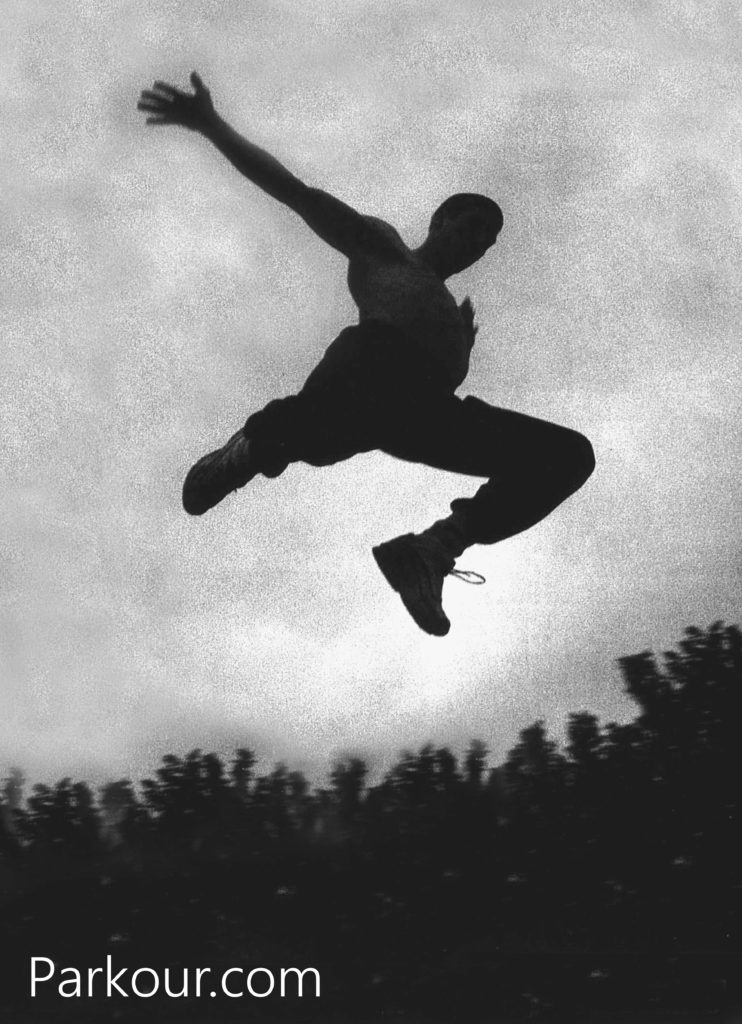
…the most iconic jump in the [BBC] commercial marked a turning point in Parkour’s history. David believed it launched the discipline, and not because he did successfully, but because he did it twice.
The history is indisputable: movement existed before the Belles; Parkour did not. Regardless of the attempts by some to deny this history, the truth remains steadfast. Parkour is an entirely unique and powerful discipline, reflecting David Belle’s legacy which has now reverberated throughout the world and undeniably changed cinema, culture, and the limits of what humanity thought was possible to achieve with the human body.
David Belle is the founder of Parkour. He created the key that the world now copies daily. By all means, copy the key, but don’t deceive yourself. Copying something is always easier than creating it, and those who deny Parkour’s origin only do so out of ignorance or in a selfish attempt to raise up their own image by detracting from David’s uniqueness, influence, and genius. Worst of all, such delusions disrespect the incredible history we have of David Belle, a man who pursued the love of his father and changed the world through it.



